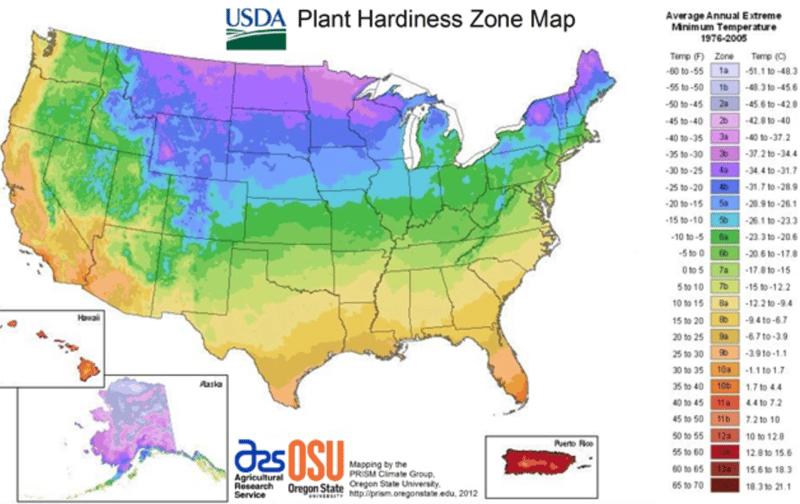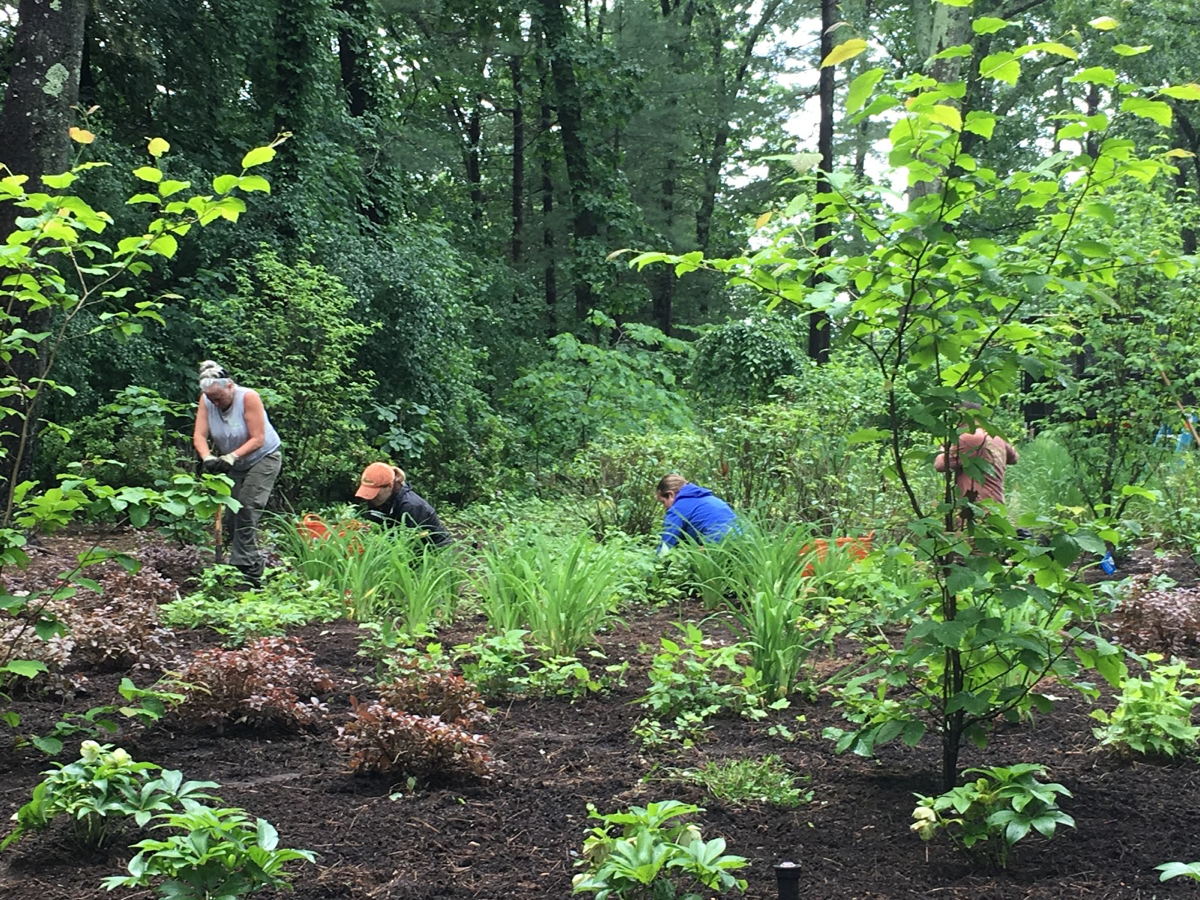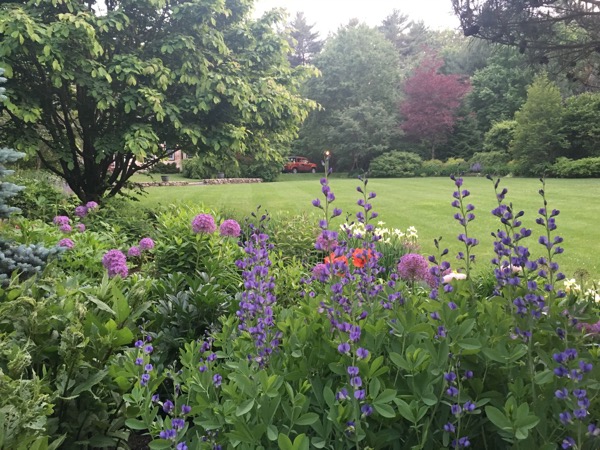One key aspect of Fine Gardening is knowing and understanding the climate in which you are working. Around here, that means knowing your USDA Plant Hardiness Zone. Wait…what?
The USDA – or United States Department of Agriculture, for the long-winded – developed the concept of plant hardiness zones back in the 1960s. They divided the United States and Canada into ten zones that represented 10-degree differences in average annual temperatures between each zone. The higher the zone number the warmer it tends to be in that area. So Zone 1 is the coldest, with an average minimum winter temperature of -60 to -50 degrees F, while the minimum winter average temperature in Zone 13 is 60 to 70 degrees F. The Department even created a handy plant hardiness zone map for agriculturists and gardeners, updated in 2012 and expanded to 13 zones, to make it easy to quickly identify the zone you’re working in.

Now, you might be thinking, “This sounds a little too industrial for me. Why should I be concerned with the USDA Plant Hardiness Zones?” Well, for a number of reasons.
Let’s start with the most common mistake gardeners make when they’re starting out. Heck, even experienced gardeners periodically make the same mistake, and that’s attempting to grow the wrong plants in the wrong region or at the wrong time of year. Knowing your regional climate and hardiness zone makes it easier to align the growing season, timing and amount of rainfall, and temperature ranges to ensure the plants you’re considering are right for the area in which you’re planting them. Most commercial plant and seed companies will helpfully print the recommended hardiness zone number right on the seed package or plant container so you can refer to it and choose the right plants for your garden.
Knowing when it’s safe to plant specific types of plants within your plant hardiness zone can make all the difference in whether your garden succeeds or fails. For example, during the month of May, gardeners in warm zones can begin to plant cutting flowers and all kinds of vegetables, while their counterparts in more northern climates are busy tilling soil and preparing beds. Here in New England, some of our planting seasons are just beginning when they’re ending in other zones.
As you well know, many plants require highly specific growing environments to thrive. You can adjust many things, such as soil type, moisture levels and amount of sunlight in your garden, but temperature can be hard to control. Choosing plants and trees with hardiness levels appropriate to specific planting zones gives you the best chance of gardening and landscaping success.

Post rainy spring garden weeding team
What is “plant hardiness?”
Simply put, plant hardiness is a plant’s ability to survive adverse growing climates such as drought, flooding, heat, and cold. The science behind plant hardiness can be complicated. Plant genetics determine the ability of a plant to withstand cold temperatures without damage. Each cultivar of a plant may have different hardiness levels based on their adaptations and genetics. Even different parts of a plant may be hardy in different ways. For example, the cold may cause your beloved perennial to dieback; however, the roots are hardy enough to bring new growth in the spring.
As you might imagine, plants – like humans – thrive differently under different conditions, so there can be some wiggle-room in the hardiness zone concept. It’s good to know that within each garden location “microclimates” exist which may allow gardeners to grow plants listed at a higher zone number which, at first glance, might normally preclude them. For example, in a zone 6 garden, there may be a warm, sunny location with well-drained soil, near a building that is protected from the cold and wind, making that particular location more like a zone 7. Conversely, in that same zone 6 garden, there may be an open, unprotected, low-lying area, where cold settles, making that a zone 5 area -- an area where zone 6 plants would struggle.

TWEETABLE TIP
When we are actively gardening, we are gardening with our climate and zone as a strong pillar of guiding information, and then adjusting for the daily, weekly, monthly, and seasonal fluctuations in our experienced weather patterns.
VIA @GardenContinuum

How does weather play into this?
While climate is the weather patterns of a specific region taken over a long period of time, say 30 or more years. Weather is considered the daily state of our climate experience - it raining and in the 60s, or it’s sunny and in the 80s.
This is important because as humans, we relate to our regional climate on a day to day basis not on a decade by decade basis. When we are actively gardening, we are gardening with our climate and zone as a strong pillar of guiding information, and then adjusting for the daily, weekly, monthly, and seasonal fluctuations in our experienced weather patterns. Plants are doing the same thing. They are relating and responding as the daily weather does. Our job in the landscape is to read that relationship as a way to understand what’s going on.
So, how important is it to know your regional climate and your USDA Hardiness Zone? Very. Taking a little time to educate yourself on your climate zone and which plants will thrive will pay off in a longer-lasting, healthier, and more beautiful garden. Then, paying attention to the current weather patterns from day to day, season to season will help you to drill down and make even better landscape decisions. And that’s what Fine Gardening is all about!
Learn more about Fine Gardening by downloading the eBook titled "The Fine Gardeners Guide to a Beautiful and Luxurious Landscape" today.









Leave a comment